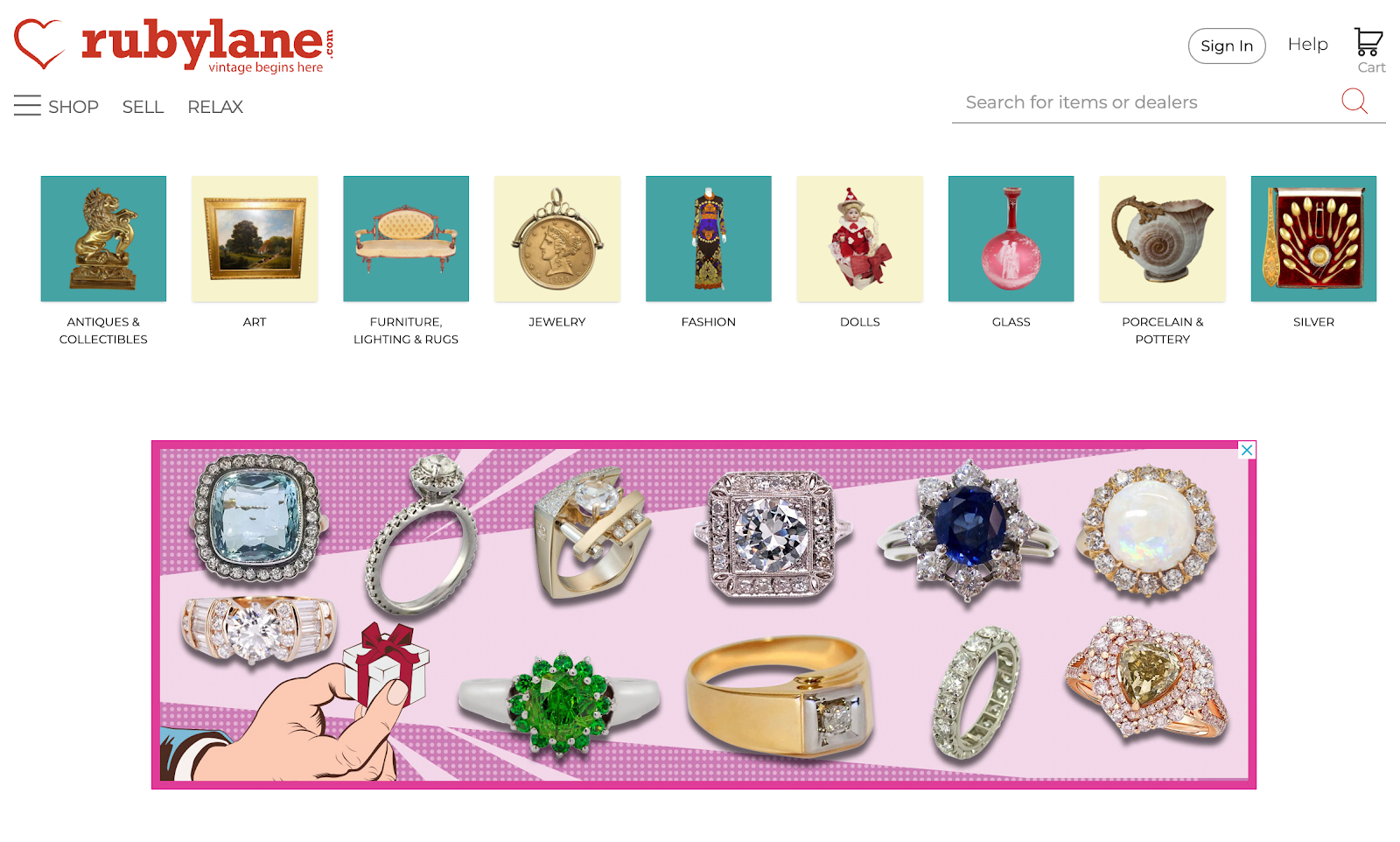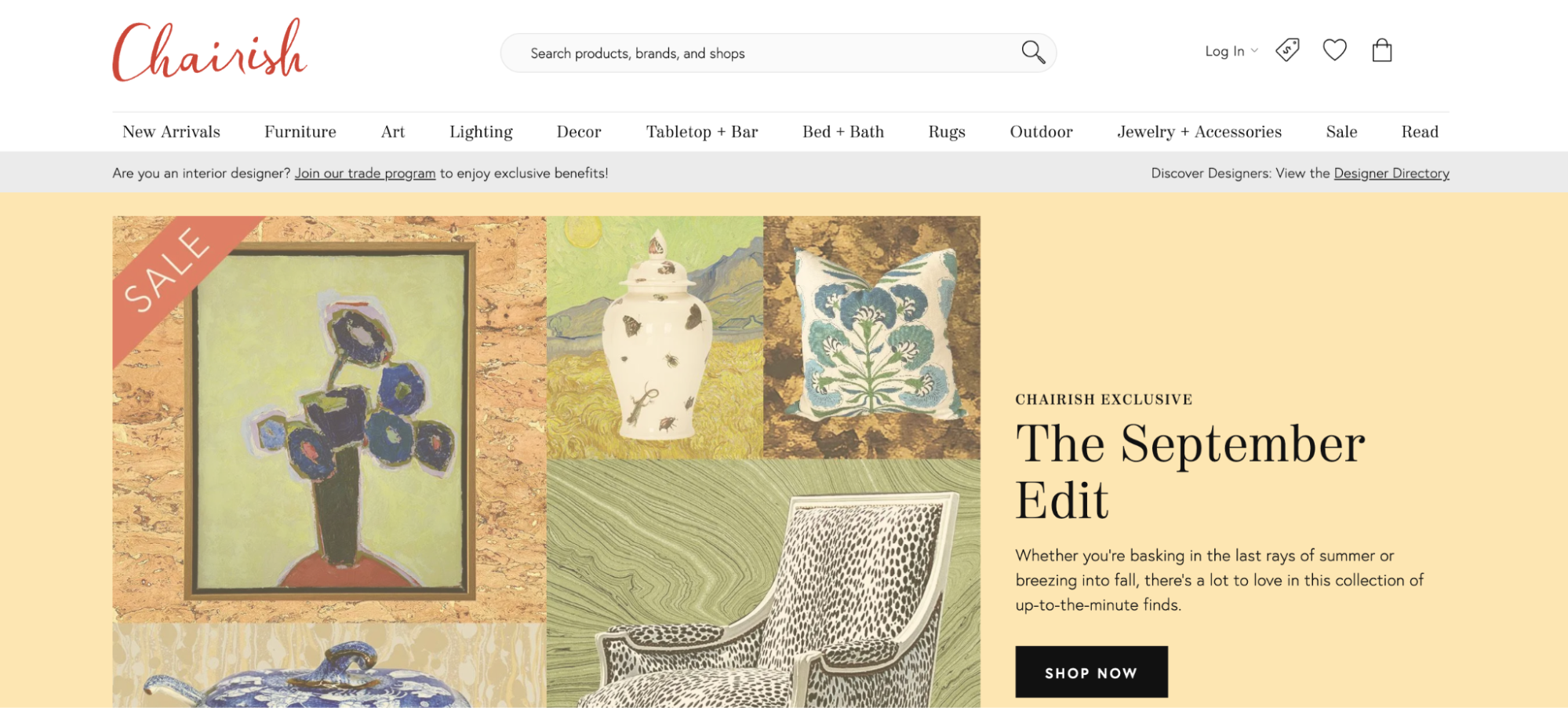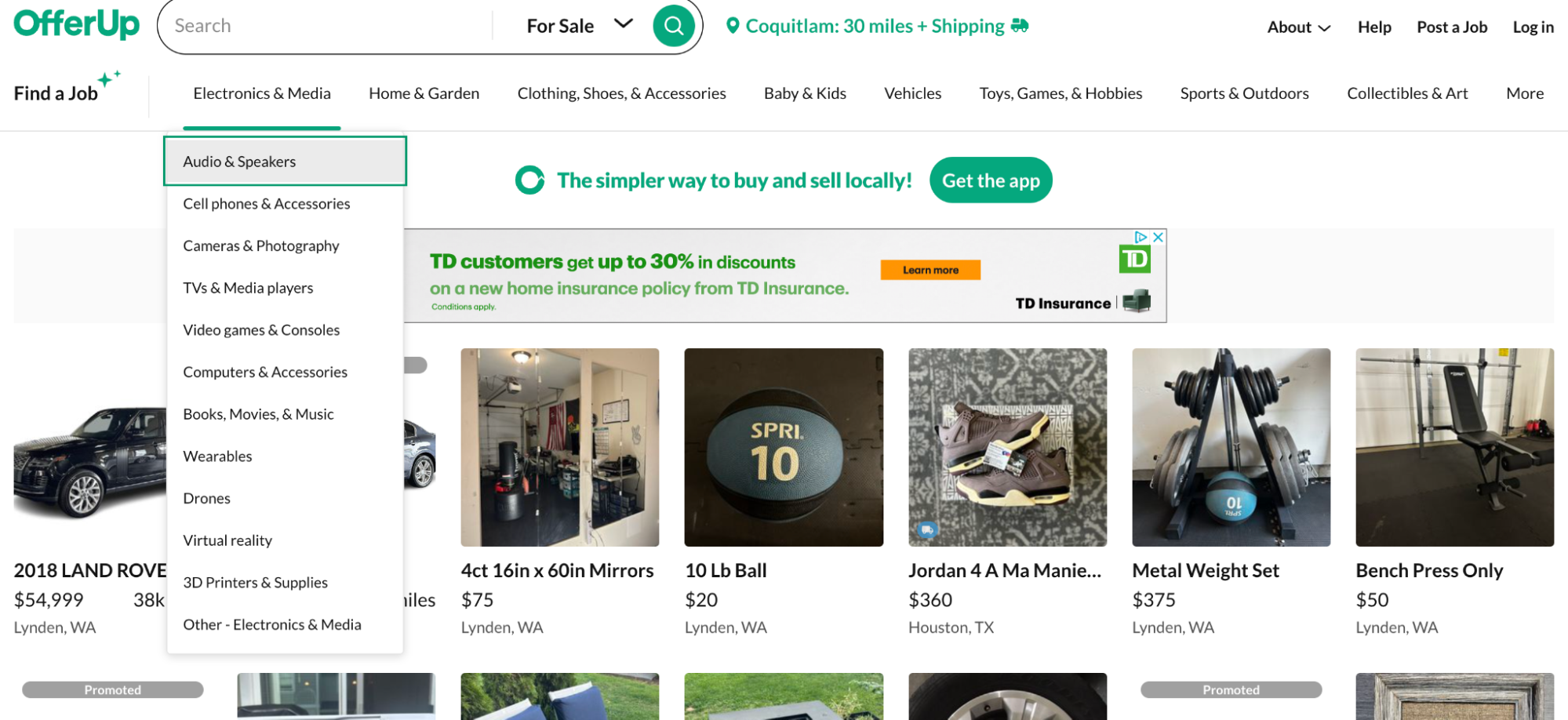Our view at Stack - Shopify has just about everything you need if you're looking to sell online. It excels with unlimited products, user-friendly setup, and 24/7 support. It offers 6,000+ app integrations, abandoned cart recovery, and shipping discounts up to 88%. Plus, it allows selling both online and in-person, scaling as your business grows.
There are hundreds of places to sell things online. Some sites are focused on specific niches, like video games and tech. Others allow retailers to sell anything from clothing to books to furniture and beyond.
While there are benefits to selling online through marketplaces, it’s important to consider factors such as commissions and transaction fees to find the best platform for you.
This article contains some of the best online selling sites, the benefits of starting your own online store, and how using both approaches can boost sales.
Building your own store
Starting an online store can be rewarding and, when done right, bring in more profit than is possible with a marketplace. The drawback of creating a website is that you have to market your business and get people onto your site. Building a brand can also take time.
When you run your own ecommerce store, you don’t pay fees on each sale or have to abide by third-party rules. If this sounds interesting to you, here’s what you can do to build your own website from scratch.
Shopify

Shopify is the easiest way to create your own store. As an ecommerce platform, Shopify allows sellers to get up and running with zero tech skills and low costs. Shopify powers millions of businesses and is known for its affordable prices, professional designs, and useful marketing tools.
If you want to use a website builder to build a website, you can choose from over 100 templates with built-in features. With Shopify, you get your own website, blog, SSL certifications, abandoned shopping cart recovery, and many other beginner-friendly marketing tools. You can sell stuff on your website, across multiple marketplaces like Amazon or eBay, and create personalized shopping experiences that lead to more sales.
Top websites to sell products online in 2024
- eBay
- Bonanza
- Ruby Lane
- Etsy
- Chairish
- Swappa
- Poshmark
- Decluttr
- Amazon
eBay

eBay is one of the original destinations for people who want to sell merchandise online, having been around since 1995—and it’s still thriving. The marketplace has over 1.7 billion listings and 135 million users worldwide.
You can sell anything on eBay, from everyday items like shoes and watches to weird stuff (yes, that’s a product category) like popcorn-scented pillows, bottles of air, and vintage ’70s giant-hand chairs. There’s a continuous flow of motivated customers and easy ways to integrate eBay as an additional sales channel for your online store.
eBay fees
If you plan to sell on eBay, take the online selling site’s fees into consideration. It charges a non-refundable listing fee for each product and another insertion fee if you list the same items in two different categories. It also charges a final value fee (usually between 10% and 12%), calculated as a percentage of the total amount of the sale, including any shipping costs and handling charges.
Bonanza

Bonanza is an online selling site that’s growing in popularity as an eBay alternative. You can sell pretty much anything on the platform, and it receives nearly two million monthly visits to its website.
Think of Bonanza as the middle ground between the online selling sites Amazon and eBay. There are more unique and handmade items for sale on Bonanza than on eBay, but fewer branded names than on Amazon. For example, you can sell the latest Nike Air Max model or a handmade copper necklace and find active buyers for each. Buyers can add products to their cart for a set price or negotiate an offer with you through the platform.
Bonanza fees
Bonanza charges you nothing to list your products on its site. It takes only a small percentage of your final sale price after you sell. And since many Bonanza sellers also have their own online stores, you can integrate Bonanza with platforms like Shopify to manage and sell products more easily.
Ruby Lane

Ruby Lane is an online marketplace for vintage and antiques. Selling on Ruby Lane gives you access to highly targeted buyers for categories like antiques and collectibles, vintage and art, dolls, and jewelry.
Whether you’re an antiques and collectibles store owner or just want online selling sites, Ruby Lane is a good place to connect with passionate buyers.
Ruby Lane fees
Fees and payments for Ruby Lane are straightforward. It’s free to set up and list your products. But you need to pay a monthly maintenance fee of $25. In addition, Ruby Lane charges a 9.9% service fee based on total purchase order, which is capped at $250.
Etsy

Etsy is a selling site for handcrafted and vintage items. In 2015, it began including maker-developed manufactured goods, but only for select accounts on the marketplace. Currently, there are over 95 million active buyers on Etsy, making it a potentially lucrative way to start selling online.
If you’re new to online selling sites, Etsy provides access to an active buyer network, a pop-up storefront, and tools to help market your business on the platform.
Etsy fees
You’ll be charged a $0.20 listing fee for each item you sell on Etsy. Listings expire every four months. So if your item doesn’t sell and you renew the listing, you’ll be charged an additional additional $0.20. When you make a sale, you’ll be charged a transaction fee of 6.5% of the display price, plus the amount you charge for shipping and gift wrapping.
💡Find out about the most popular Etsy alternatives.
Chairish

Chairish is an online consignment shop made for high-quality home decor and furniture. It takes minutes to list an item (for free), and depending on your seller plan, between 70% and 80% of the selling price goes back to you.
If you have design-oriented furniture or home decor to sell online, this is a relevant online selling site. It can quickly land your business in front of ideal customers.
Chairish fees
Chairish has free and paid plans, with differing commission rates depending on product type and plan tier. When you list your items, Chairish’s curatorial team reviews your listings to ensure they meet the marketplace’s standards. They also handle shipping, so you never have to worry about logistics when selling on Chairish.
Swappa

Got an old iPhone sitting around that you want to get rid of? Or a Nintendo Switch you don’t use much anymore? Turn your tech into cash on Swappa, a buy-and-sell website for phones, laptops, cameras, and more.
Swappa vets all the products that get sold on its marketplace, so everything you submit must be in good working condition. Payments are protected by PayPal.
Swappa fees
There are no fees to create a listing, but you can choose to have your items featured for $5. When you make a sale, you pay a 3% fee, along with the buyer.
Poshmark

Launched more than a decade ago, Poshmark is one of the most popular social commerce marketplaces for users who want to sell clothing and lifestyle accessories.
With more than 80 million registered users, sellers on the platform benefit from a large community of eager buyers. Poshmark sellers can also share their items on social media.
Poshmark fees
As stated in its FAQ, sales under $15 accrue a flat commission of $2.95. For sales over $15 Poshmark’s commission is 20%.
Decluttr

Decluttr is another platform that focuses on electronics, but it’s also a selling site for books, game consoles, and other home entertainment items.
Decluttr fees
Unlike some of the other marketplaces on this list, Decluttr buys your electronics directly. Using their app, scan the barcode of the items you wish to sell for a quote. Decluttr handles all shipping costs and pays for your items as soon as they’re received.
Amazon
 Amazon pioneered the concept of online marketplaces and continues to reign supreme.
Amazon pioneered the concept of online marketplaces and continues to reign supreme.As global ecommerce sales continue to grow, Amazon remains the go-to selling site for many. It’s reported that Amazon sells over 4,000 products per minute, providing sellers with an active, built-in audience.
Amazon fees
The cost to sell on Amazon depends on your plan, product category, fulfillment strategy, and other variables. At minimum, you’ll pay $39.99 per month for a Professional Seller plan.
Local online selling sites
If you plan to sell in your community, here are the top online sites to sell stuff locally for free:
- Facebook Marketplace
- Craigslist
- Nextdoor
- VarageSale
- Offerup
Facebook Marketplace

Facebook Marketplace from Meta is an online selling site where individual people can discover, buy, and sell items on Facebook. More than one in three people in the US use Marketplace each month, offering a huge opportunity for sellers to reach an active audience. It’s free to list and Meta takes no fees, but there are guidelines you need to follow to sell on the platform.
Meta has also partnered with platforms like Shopify to let merchants show their inventory, advertise items, and find new customers for their business.
Craigslist

Craigslist is one of the earlier online selling sites. Started in 1995 by Craig Newmark, it began as an email distribution list between friends featuring local events in the San Francisco Bay Area. It quickly became a web-based marketplace and, over the years, expanded into 700 cities across 70 countries. It’s free and pretty basic but definitely not the best online store to sell items at scale. It’s essentially a big local forum with a lot of stuff.
Craigslist is a higher-risk online marketplace. Because of the platform’s “hands-off” approach to buying and selling, scams can happen easily, and if they do, you don’t get any help from the company.
Nextdoor

Nextdoor is similar to Facebook Marketplace and Craigslist in that it’s focused on community selling. Nextdoor also enables the “friendly neighbor” feel by letting people post about what’s going on in their neighborhood—whether it’s traffic delays or restaurant recommendations. It acts as the hub for any given area.
Nextdoor also offers a free forum to sell your items online. It’s similar to Facebook Marketplace: there are no listing fees and you’ll have to meet buyers in person. It feels a little safer too, because you need to make an account before you can access the platform.
VarageSale

VarageSale is a virtual garage sale buy and sell app. It was started in Canada by an ex-elementary school teacher fed up with scams and fake listings on other classified sites. VarageSale user profiles are based on real identities—everyone goes through a manual review process before you’re allowed to buy or sell.
Buyers can browse seller ratings and message sellers to connect before making the sale. They can ask questions and schedule pick-up in the app. People sell everything including furniture, clothing, shoes, and more on VarageSale. It’s also free for members.
Offerup

Offerup allows users to browse electronics, clothing, and even automobiles based on ZIP code. Interested buyers can contact sellers through the app to negotiate price and set up a location to meet.
Like VarageSale, Offerup has procedures to ensure the safety of users. Before you agree to meet up, you can browse user profiles and read a seller’s reviews. Offerup uses TruYou to verify identities of their users helping to further increase safety. They also recommend community meetup spots to make the transaction as reassuring as possible.
Best global online selling sites
Want to sell to an international audience? Here are the best sites to sell online around the world:
- AliExpress
- Taobao
- OTTO
- Rakuten
- Mercado Libre
- Flipkart
- MyDeal
AliExpress

Founded in 2010, AliExpress is Alibaba’s cross-border ecommerce marketplace, with nearly 20 million daily visitors. Users of the platform can sell to individual people or businesses, whether they are manufacturing products or adding an AliExpress dropshipping model to their online store.
AliExpress takes between 5% and 8% of commission fees for each transaction, depending on your product category. Otherwise, there are no overhead or arrangement fees to sell on the platform.
Taobao

Taobao is an online selling site founded in 2003 that has grown to become the largest online marketplace in the world by gross merchandise value.
OTTO

Otto is based in Germany and has a focus on fashion and lifestyle products. It grew from a post-war mail-order company selling shoes to a business with 11 million active customers.
Today, over 90% of OTTO’s products are sold online, including branded products and goods from third-party retailers.
Rakuten

Rakuten is a large marketplace based out of Japan that provides ecommerce, banking, communications services, and more. Similar to marketplaces like Amazon, you can sell in endless product categories, including clothing, books, sports, subscription boxes, and more.
Businesses who want to sell on Rakuten need to be registered in the United States or Japan, or use a service partner.
Mercado Libre

Mercado Libre is the most popular ecommerce marketplace in Latin America, serving over 18 countries. Sellers on the platform sell many types of products from 20 main categories and 123 subcategories.
Flipkart

Flipkart started as an online bookstore in 2007 and has become the largest online selling site in India. Retailers can sell anything on Flipkart, including consumer elections, fashion, home essentials, groceries, and lifestyle products. An Amazon competitor, Walmart-backed Flipkart continues to lead ecommerce market share in India.
MyDeal

MyDeal is an Australian marketplace offering more than one million products across 3,500 categories, welcoming over four million visitors per month. It’s strictly a marketplace, meaning it doesn’t sell products of its own, only those from third-party sellers.
While you can sell products in various categories, the platform tends to focus on furniture, homewares, and other big items. MyDeal doesn’t offer any fulfillment services, so sellers must coordinate their own shipping or use an outside logistics company.
Find the best online selling site
Every online business owner should explore different online selling sites, regardless of whether you’re running a dropshipping store or selling custom products. Sometimes they can help new businesses get off the ground with a built-in audience of active buyers and marketing opportunities.
Regardless, it’s important to not rely only on online marketplaces. You’ll want to create your own online store to build your brand, connect with shoppers, and retain more profits. With a digital home base, you’ll stop paying out commissions and fees to each online selling site and grow your business for the long term. After all, the best sites to sell online are the ones you own.
Illustration by Rachel Tunstall
Selling sites FAQ
How can I start selling online?
- Use an ecommerce platform to create your own online store.
- Become an individual seller on existing online selling platforms like Amazon, eBay, or Etsy.
- Sell on social media platforms like Facebook and Instagram.
- Start a dropshipping business.
- Sell old stuff through a resale app like Decluttr or VarageSale.
What are the best websites for selling stuff online?
- Your own store
- Amazon
- eBay
- Etsy
- Bonanza
- Facebook Marketplace
- Rakuten
- Faire
- Poshmark
Where can I sell my stuff online for free?
- Facebook Marketplace
- Nextdoor
- VarageSale
What is the best site to sell stuff locally?
- Facebook Marketplace
- Craigslist
- Nextdoor
- VarageSale
- OfferUp
- Poshmark
- eBay
- Vinted
- Decluttr
If Shopify is of interest and you'd like more information, please do make contact or take a look in more detail here.
Credit: Original article published here.
